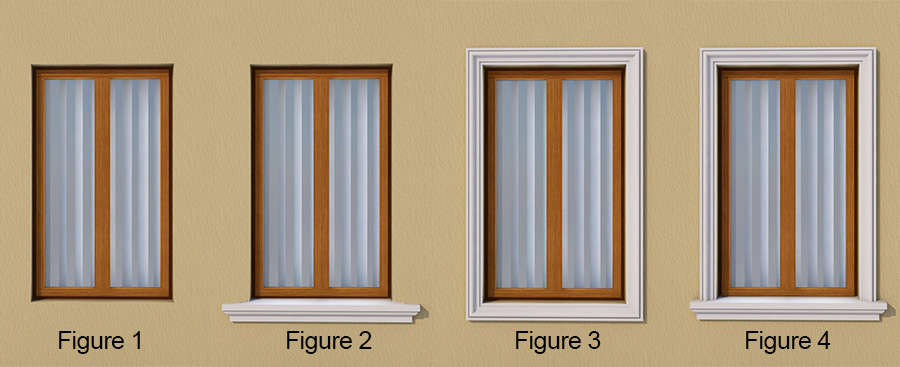Measuring your project allows our Technical Sales Representatives to give you a more accurate idea of project costs, and is usually fairly straight forward. You will need a tape measure, calculator, notepad and pen.
How to measure up for Base Board Cladding
- Measure the length of the walls you wish to install the Baseboard Sheets and times this measurement by the height of the wall. This will give you the total square meters of Baseboard you will require. e.g. A wall that is 7.0m long x 3.5m high: 7m x 3.5m = 24.5m2 Note: If you have any large windows and doors (over 3m2 of area) in the wall areas you are measuring, deduct ½ of these from your calculations. Leave all smaller windows (less than 3m2 of area) in your calculations. This will give you enough product to allow for offcuts and wastage etc.
- Input the total square meters into the online calculator to calculate the total number of Baseboard sheets you require.
- Measure the amount of lineal meters around the base of the baseboard system where you will be installing the Baseboard Blocks, including at ground level, and above roof line etc. e.g. A wall that is 7.0m long gives you a total of 7 lineal meters (do not include gaps for doors)
- Input the total lineal meters into the online calculator to calculate the total number of Baseboard Blocks you require.
- Measure the quantity of External Angles you will require. External angles are required around all windows and doors, along with all external corners of the building. External angles are supplied in 2.7m lengths and it is ideal to use one continuous angle wherever possible, not joining angles i.e. A window that is 2.4m High, allow one 2.7m length for each side.
- Calculate the total quantity of external angles you require for the building and input into the online calculator.
- Once these three quantities have been input into the online calculator, all remaining product quantities for the system you have chosen will be calculated.
It is good practice to add a percentage for wastage/offcuts. Professionals add approximately 5-10% to each job to allow for variations.
Once you have measured up, and filled in one of the Base Board System Calculators below, Contact our team for a quotation or to make an order.
Calculator: Uni-Base Board non-cavity System
Calculator: Uni-Base Board Cavity System
Calculator: Uni-Base Board System (BAL 29)
Calculator: Uni-Base Board System (BAL 40)
How to measure up for Render & Texture
- Measure the length of the walls you wish to apply render and times this measurement by the height of the wall. This will give you the total square meters of Render you will require. e.g. A wall that is 7.0m long x 3.5m high: 7m x 3.5m = 24.5m2
Note: If you have any large windows and doors (such as the 4.8m x 2.4m opening in the example shown) in the wall areas you are measuring, deduct ½ of these from your calculations. Leave all smaller windows (less than 3m2 of area) in your calculations. This will give you enough product to allow for window reveals / wastage etc.
Contact your local Unitex Office or representative to recommend the appropriate render and quantity for your specific substrate and needs.
How to measure up for Window Mouldings
- Window mouldings can be installed in various configurations, such as with a window sill mould (Figure 2), or, as a picture frame (Figure 3), or combination (Figure 4). Prior to measuring mouldings, please decide on the look you wish to achieve as this will affect the lengths of mouldings you require.
- Measure the height of the window and choose the length of mould that will provide the least amount of wastage (remembering to allow extra for the mitre of the moulding e.g. If a window is 2100mm high and you are using a moulding that is 90mm wide, the total amount of moulding required is 2190mm). The best length for this size window is therefore 2.4m
- Measure the width of the window head(remembering to allow for mitres). Often 1 length of moulding will cover the heads of two windows (see Figure 3 & 4)
- Measure the Window sill required, remembering that the sill needs to pass the architrave moulding on each side of the window and then also needs to be mitred/returned (Diagram 4)
How to measure up for Parapet / Eave Mouldings
How to measure up for Stringer Mouldings
Measure across the area you wish to install mouldings on, and divide by 2.4 or 3 (stringer mouldings generally come in 2.4 or 3m lengths) remembering to allow extra for any mitre. It is ideal to space the joins of the mouldings evenly per façade to achieve the best results.
How to measure up for Pier Caps
Measure all four sides of Pier and provide to Unitex. A lot of piers are not exactly square, so measuring all four sides is essential.
Please note: if your piers are going to be rendered, however are not rendered as yet, either wait until rendered to gain exact measurement of piers or make an allowance for the render thickness to be completed.
How to measure up for Columns
Unitex columns are available as standard in 3m lengths and can be cut down to size on site. Note: If you are using a tapered column, cut any excess from the base of the column. These columns are manufactured with the first meter straight so any trimming required will not affect the diameter of the column ensuring standard column bases can be used.
If you require a height greater than 3m, please contact your local Unitex Office or representative for recommendations.




